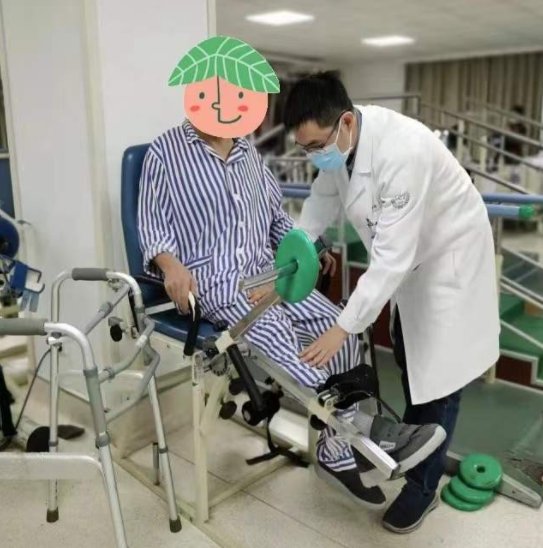In March, when the flowers are beginning to bloom, the leaves are turning green, and the spring is bright, it is a good time for a spring outing.
Meeting friends, walking in groups of three or five to the West Lake, in the warm spring breeze and the beautiful spring scenery of the West Lake, not only exercising, but also enjoying the leisure and joy, wouldn’t it be fun?
But is walking tens of thousands of steps a day really beneficial to the body without any harm? Not really! Some people went to the hospital because they walked too much.
Walking to West Lake 4 times a week
After half a month he “walked” into the hospital
< p> 55-year-old Uncle Zhang (pseudonym) weighs 83 kilograms and is a worker in the electromechanical industry. Because of work needs, he often unloads and moves goods, and sometimes he is so tired that he can’t straighten his waist.
About 7 years ago, Uncle Zhang suffered from pain in both knee joints. Sometimes he hit soft legs and the joints snapped, especially when going up and down stairs. “It feels like I’m staying.” Uncle Zhang described it this way. “As soon as the temperature dropped, I felt like I stomped on my knees with two lumps of ‘ice bumps’.”
Uncle Zhang went to the local hospital for treatment, okay An MRI showed damage to the meniscus. After a course of local injection of sodium hyaluronate, Uncle Zhang improved slightly, but it did not seem to solve the problem fundamentally. In the days that followed, Uncle Zhang would still “get sick” from time to time, and every time the pain was severe, he would take some anti-inflammatory painkillers.
Recently, an “old comrade” of Uncle Zhang came to visit. Uncle Zhang was very envious when he saw his old friend’s energetic and energetic appearance. A friend said that his good body was caused by running along the West Lake and exercising for many years, and then invited Uncle Zhang to run together.
Uncle Zhang chose West Lake as his “check-in place” while spring was blooming. He walked on the West Lake 4 times a week, and almost every time he “occupied” the sports rankings, which gave him a great sense of achievement. .

However, it didn’t take long for Uncle Zhang’s knee pain symptoms to become more and more recurring. Hospital Rehabilitation Medicine. The examination revealed slight swelling around the knee joint, local tenderness accompanied by movement disorders, and magnetic resonance imaging indicated that there were “joint effusion, meniscus tear injury” and other manifestations. After local injection of sodium hyaluronate and other drugs into the knee joint under the guidance of ultrasound, combined with exercise therapy, Uncle Zhang gradually improved. Dr. Meng Xiangbo from the department urged Uncle Zhang to continue to adhere to the standard exercise rehabilitation treatment of the knee joint.
Meng Xiangbo further explained that elderly people who are sedentary or suffer from chronic diseases usually have weak limb muscle strength and a different posture when walking, which is prone to joint biomechanical structural problems and even joint inflammation. “In this case, walking vigorously may increase the burden on the weight-bearing joints of the limbs, such as the hip and knee joints, to a certain extent, it will increase the wear and tear of the local cartilage of the joints, and then produce synovial inflammation, cartilage ligament damage, etc., aggravating the original Osteoarthritis in some cases. In extreme cases, it may even require orthopedic visits and joint replacement surgery.”

you age determines how many steps are appropriate for each day
Extra steps have no added benefit in prolonging life
Published on March 2 this year in A large international study by The Lancet Public Health has determined the optimal range of daily steps for people of different ages through a meta-analysis of nearly 50,000 people on four continents.
The results showed that the risk of death gradually decreased as the number of steps increased, and then leveled off: for people 60 years and older, the number of steps per day associated with a reduced risk of death stabilized between 6,000 and 8,000 steps; while for adults under 60, the number of steps per day associated with a reduced risk of death stabilized between 8,000 and 10,000 steps per day.
In other words, in terms of reducing the risk of death, the elderly can walk 6,000 to 8,000 steps per day, and the young can take 8,000 to 10,000 steps per day. More steps than this can prolong life. There is no additional benefit.
In addition, the study found no clear link between walking speed and a reduced risk of death, except for total steps per day. That said, no matter what speed you walk at, you reduce your risk of death.
The above findings have also been validated clinically. Meng Xiangbo, deputy chief physician of the Rehabilitation Department of Hangzhou First People’s Hospital, said that due to individual differences, not everyone is suitable for “step count”, and tens of thousands of steps are not good for the elderly or people with joint damage.
The doctor brings you spring “Brisk Walking Tips”
1. Do a good warm-up exercise before “Brisk Walking”. Many people do not warm up in advance, and enter the state of exercise without the limbs fully adapted, which is prone to accidental injury. Therefore, allowing yourself to be physically active before exercising can help reduce injuries later in exercise.
2. Don’t be obsessed with the “top screen” sports rankings, and don’t be entangled in the goal of how many steps you must “check in” every day. You should adjust the number of exercise steps according to your age and physical condition. For example, the elderly should take 6,000 to 8,000 steps a day, and the young should take 8,000 to 10,000 steps a day.
3. Follow the step-by-step principle when exercising. Sudden strenuous exercise is prone to adverse symptoms such as dizziness and nausea. You can set a small, easy-to-achieve goal for yourself, and then increase the amount of exercise little by little until you reach the optimal intensity of exercise that keeps you healthy.
4. When walking, you should choose a playground with a softer ground and wear sports shoes of suitable size, which can buffer and protect the joints to a certain extent and avoid sports injuries.
Source: Qianjiang Evening News